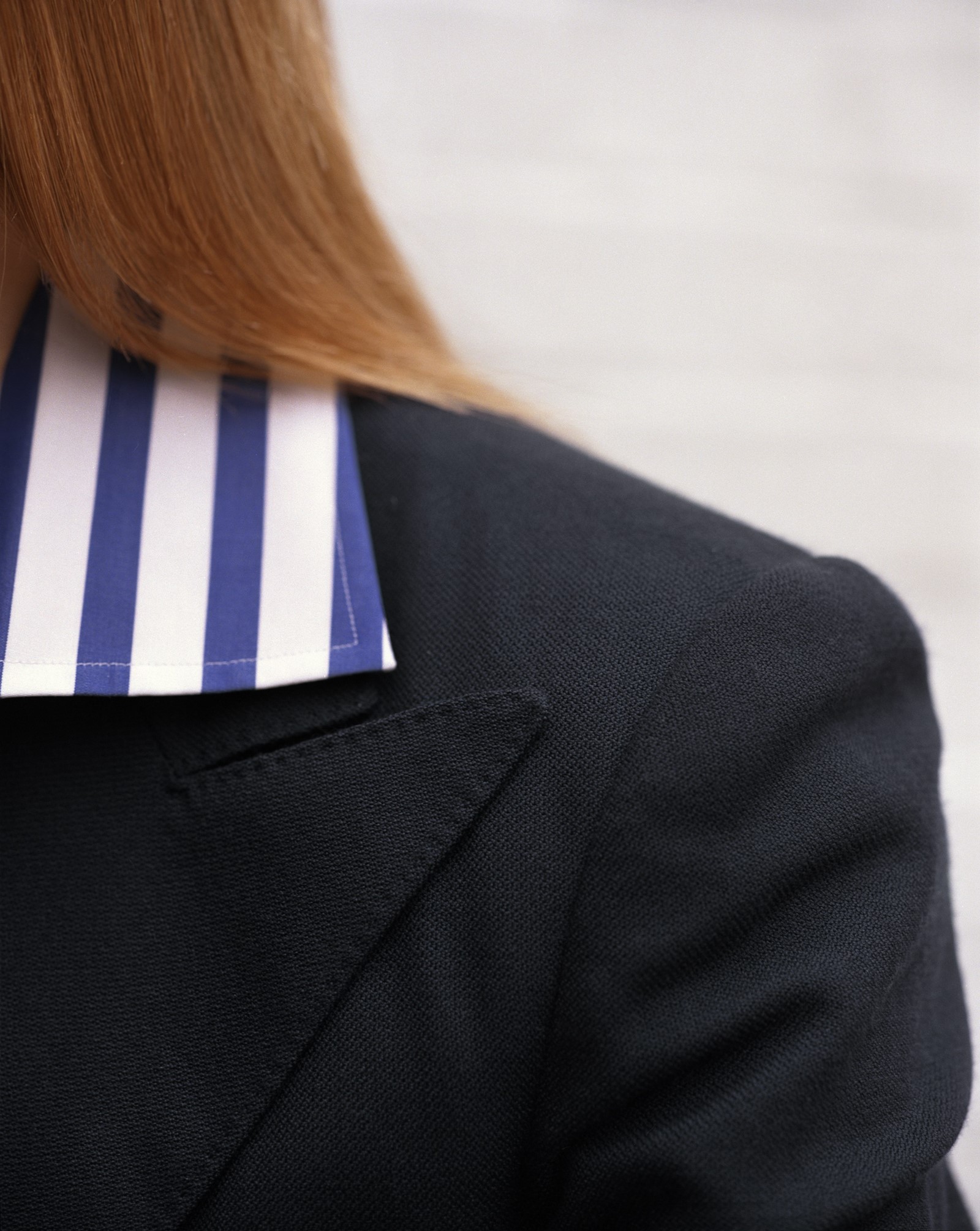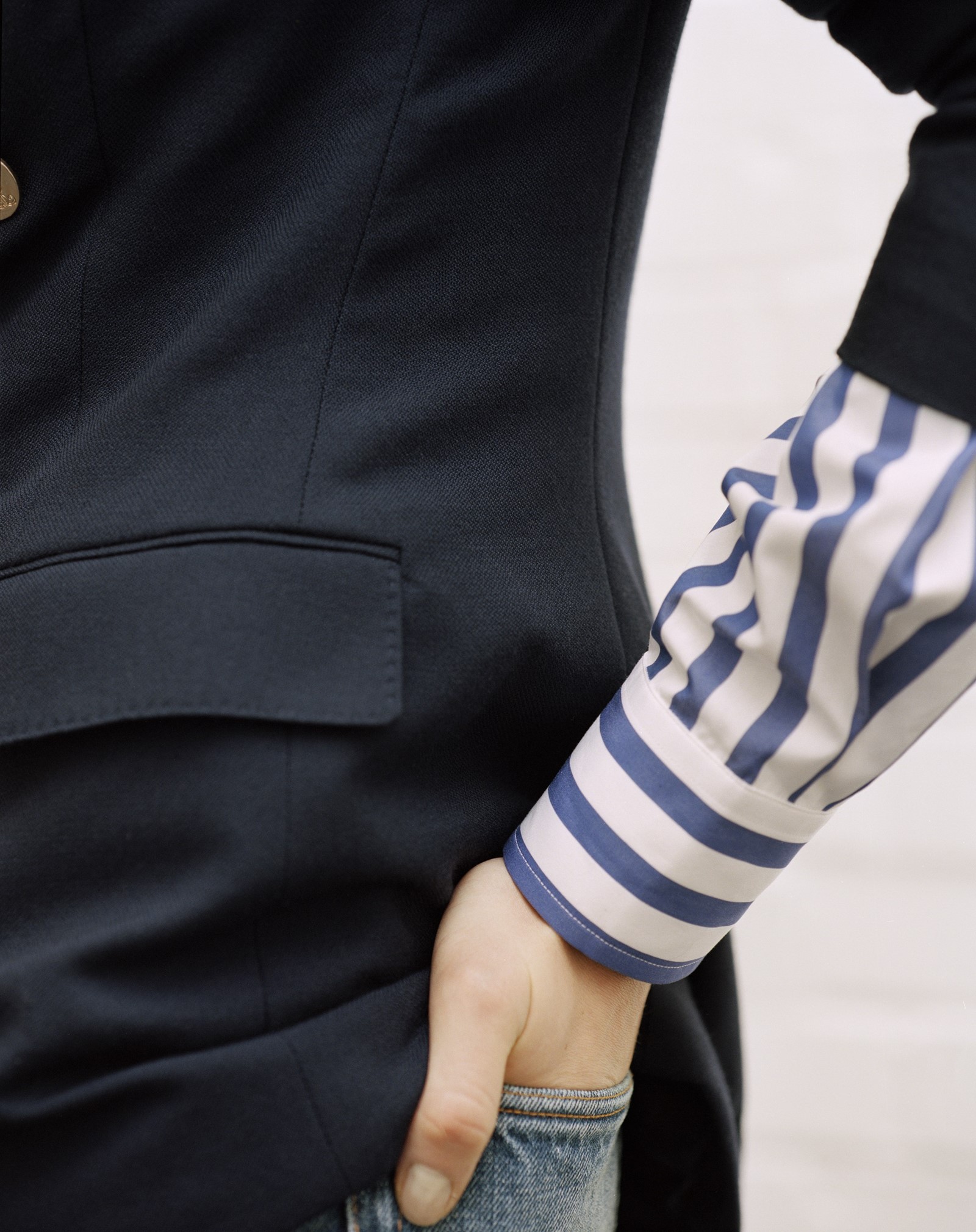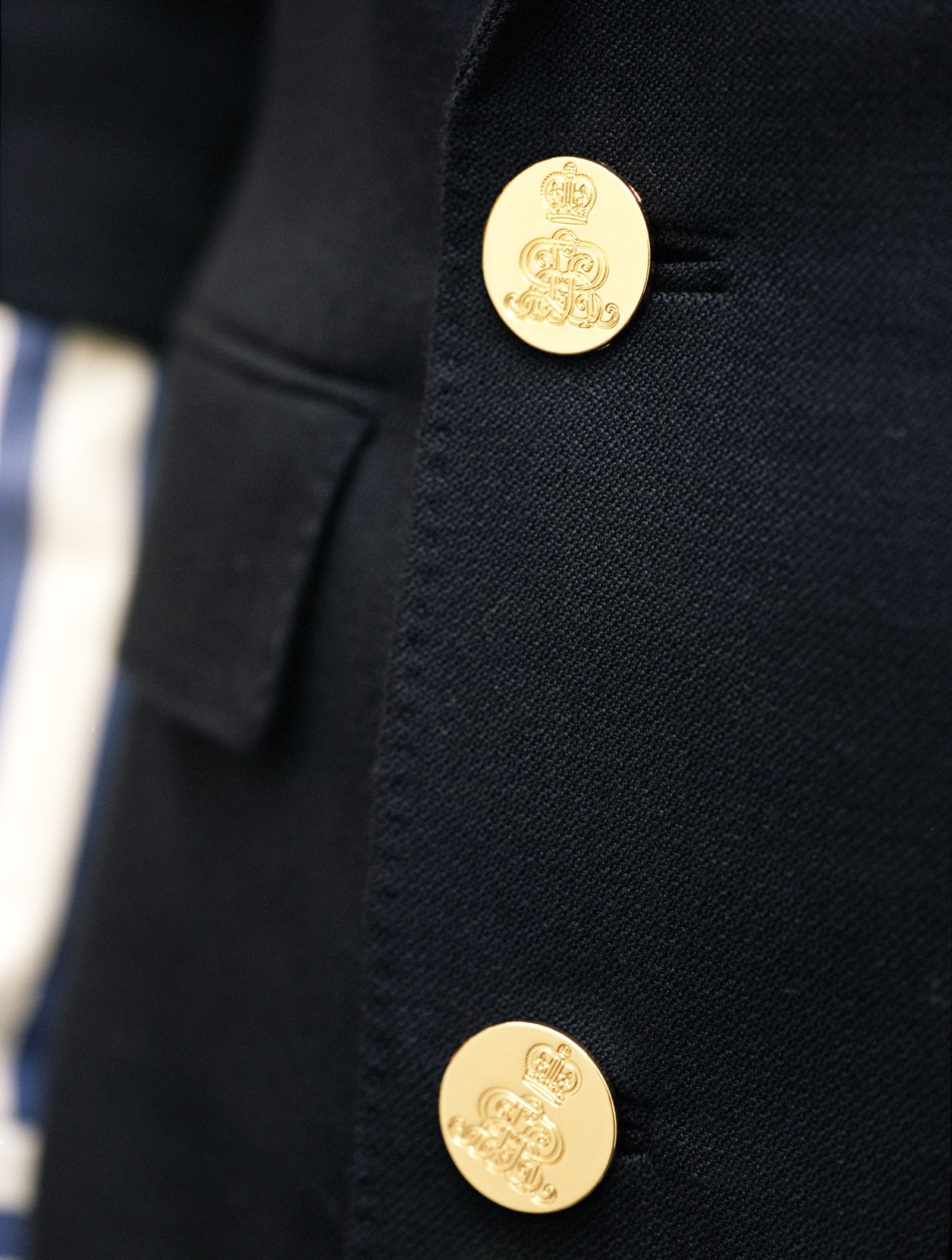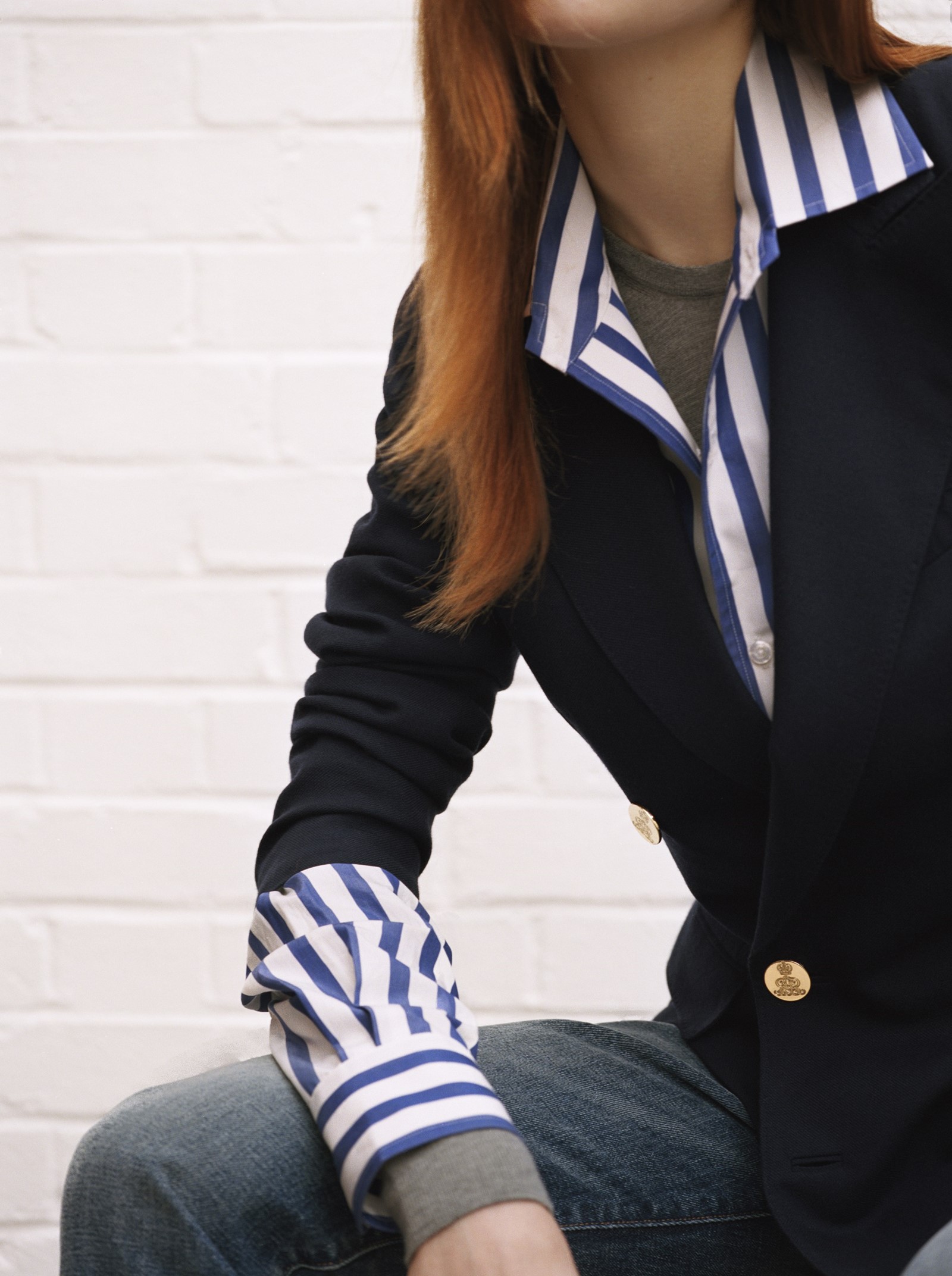The Navy Blazer, a piece which Ralph Lauren – a man synonymous with classic Americana – adopted as one of his own trademarks, is in fact quintessentially British in origin. During the 19th century, this simple tailored jacket was embellished with buttons in pewter, brass, silver and mother of pearl, but the fastenings served a secondary purpose other than to hold two sides of the garment in place; they were embossed with symbols signifying the prestigious club, sports team or school to which the wearer belonged.


One such example is the rope and anchor button, which plays an integral role in the story narrating how the blazer came to form a fundamental part of our contemporary wardrobe in the first place. During Queen Victoria’s 1837 visit to a Royal Navy vessel (aptly titled the H.M.S. Blazer), the Commander – under great pressure to impress her majesty – purchased bespoke uniforms for his crew, deciding that double-breasted jackets with angular lapels and brass buttons displaying the aforementioned maritime emblem were most appropriate for such a prestigious occasion. The sailors were so enthusiastic about their new ensembles that they set a Royal Navy-wide trend, and eventually uniforms became standardised in their likeness.
So covetable were these liveries that they gradually trickled down into the wardrobes of civilians wanting to channel nautical style. At London’s famous Savile Row, tailors churned out blazers in wools, cottons and linens at a rate of knots, with the garment making a transatlantic journey stateside during the 1920s (where prep school and Ivy League students adopted the trend with relish, continuing to wear the jacket to this day). Ralph Lauren – a self-confessed anglophile – also remains a huge advocate for the blazer and the unrivalled elegance it provides. He captured its sophisticated spirit on film, in the costumes he designed for the 1974 adaptation of F Scott Fitzgerald’s The Great Gatsby, starring Mia Farrow and Robert Redford, and also in his work on the 1977 Woody Allen-directed picture Annie Hall, where the androgyny of the blazer became emblematic of actress Diane Keaton’s unique style.

Through his groundbreaking work with Keaton, Lauren’s career sailed into the stratospheres and with it, he took the blazer as a signature code of his namesake brand. He notes that “fashion is about establishing an image that consumers can adapt to their own individuality,” and in his hands, the Navy Blazer has transcended from sailors to sartorial innovators, cementing the jacket’s place in fashion’s hallowed hall of fame. It is a garment that can be styled in multifarious ways, and whether you choose to wear yours with a slouchy suit trouser or ostentatious overalls à la Annie Hall, the result will always be the same: chic, timeless and radiating with modern ease.
Ralph Lauren Curated Collection of Timeless Design is available now.
Model Sofie Theobald at The Hive; Hair Sophie Anderson; Photography assistant Dan Clarke; Production Beth Mingay
